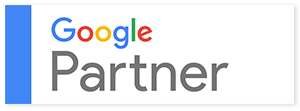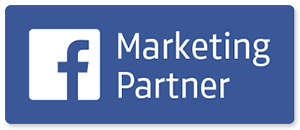Lawn care companies trying to manage AdWords and PPC campaigns themselves often find out the hard way – how expensive it can get…

October 17, 2012
With Costs Rising, Small Companies Search for Alternatives to Google AdWords
By DARREN DAHL
When Tom Telford helped found a vacation rental management company, Blue Creek Cabins, in 2001, he wanted a quick and easy way to connect with people looking to rent the 20 cabins he and his partner managed in and around the mountains of picturesque Helen, Ga.
That is when he heard about a program called AdWords being offered by a new company, Google. Finding the system relatively easy to use, Mr. Telford selected a few keywords, like “Helen GA cabin rentals,” and agreed to pay Google 60 cents every time someone performed a search and clicked on his ad.
Before long, the calls and e-mails started pouring in. “The results were phenomenal,” said Mr. Telford, whose company is used by property owners to market their cabins. Encouraged, he invested more in his pay-per-click advertising efforts, which in time included similar programs offered by Bing and Yahoo.
By 2010, Mr. Telford had started a new management company, Cedar Creek Cabin Rentals, and was spending $140,000 a year on pay-per-click advertising to promote the 45 cabins in his charge. The programs had become increasingly popular and competitive, which meant that in order to retain his ranking in search results, he had to pay about $1.25 a click, double what he had paid initially. “The cost per keyword climbed dramatically over the years,” he said. “And it’s still going.”
And that is a problem. While Mr. Telford agreed to pay more for his keywords, he said he did not see a commensurate increase in sales. “For a while, I was spending more than I was getting,” he said. “It finally hit me to ask, ‘Can I sustain this?’ ”
This concern has become increasingly common as online advertising has become a standard channel for large companies. Attracting those additional advertisers has been great for Google, which reported a 42 percent increase in paid clicks, year over year, for the second quarter of 2012. But the heightened competition has driven up the prices for keywords and made it harder for small companies like Mr. Telford’s.
While about 96 percent of pay-per-click advertisers spend less than $10,000 a month, according to AdGooroo, a research firm that studies the pay-per-click market, big-budget advertisers spend hundreds of times more. In the first half of 2012, Amazon reportedly spent $54 million, and the University of Phoenix $37.9 million. “AdWords can bleed many a small business dry,” said Sharon Geltner, an analyst at the Small Business Development Center at Palm Beach State College in Boca Raton, Fla.
“The only way for smaller advertisers to get an edge is to spend a lot of time improving the quality and relevance of their ads,” said Richard Stokes, author of “Ultimate Guide to Pay-Per-Click Advertising” and the founder of AdGooroo. “The problem is that everyone else is doing that as well.”
Until recently, Byron Udell, founder and chief executive of AccuQuote, a life insurance agency based in Wheeling, Ill., was spending several million dollars a year on pay-per-click campaigns. But after watching the price of keywords like “life insurance” rise to more than $20 from about $1 over the last 10 years, he decided to scale back greatly.
“The cost to get someone just to visit your Web site has, in some cases, become prohibitive,” Mr. Udell said. “Something that cost $3 might be a no-brainer, but at $20 it becomes absurd. It’s basic math, and if it doesn’t add up, we won’t do it.” He said he planned to redirect some of his advertising dollars to print, television and radio.
Google does not dispute the accounts of owners like Mr. Udell. Asked if rising prices were driving small businesses away from pay-per-click programs, a Google spokesman released a statement saying that businesses needed to go where their customers were: “search, social media, earned media and more.”
Many analysts agree. “AdWords is still doable and reasonably profitable for local businesses or those that have narrow niches and high barriers to entry,” said Perry Marshall, the author of “Ultimate Guide to Google AdWords.” “But you cannot put all your eggs in one basket. The ultimate goal for any business should be to drive as much unpaid traffic to their site as possible.”
The increased demand for unpaid, or organic, search results has given rise to an entire industry specializing in search engine optimization, or S.E.O., with countless professed experts who promise to improve a Web site’s search ranking.
Mr. Telford said he was approached by dozens of such experts. “My competitors were inching up in organic traffic because I wasn’t doing anything,” he said. “But I also wasn’t comfortable hiring an S.E.O. expert, because none of them could explain exactly why what they were doing would work. It felt like they were selling me black magic.”
As he looked for alternatives, Mr. Telford came across a number of companies like RhinoSEO, Marketo, Eloqua and Pardot, which sell online services that promise to automate a company’s marketing efforts and improve organic search results. The basic idea, Mr. Telford concluded, was that investing in social media content like blogs and Facebook pages could attract unpaid traffic.
“It hit me like a brick, because I finally understood how you get better search results by creating content around the keywords people are searching for,” he said. “As we become more relevant to Google, our quality score improves in our AdWords campaigns. This enables us to bid lower, yet because we’re more relevant, we pay less per click.”
As a small-business owner without a full-time marketing staff, Mr. Telford wanted a tool that could help him manage both his social media content and his pay-per-click expenditures, which he planned to continue on a much-reduced basis. After conducting his research, he chose to sign up for the services offered by a company called HubSpot, which is based in Boston.
Available online as software-as-a-service, HubSpot helps business owners set up a blog and optimize it to be recognized by search engines. The site, which has more than 8,000 customers, most of whom pay $200 to $1,000 a month, helps users populate and manage their Twitter, Facebook and LinkedIn accounts, along with any pay-per-click campaigns. It also tracks visitors and helps subscribers calculate the return on investment for their marketing initiatives.
Even though Google is one of its investors, HubSpot cut back on its own pay-per-click expenditures after realizing that organic searches were accounting for 60 percent more traffic than paid searches. “Most of our paid efforts shifted to platforms like LinkedIn, where we could target for the right kinds of job titles in line with our target customer profiles,” said Dan Slagen, who is in charge of advertising at HubSpot.
In March 2011, Mr. Telford started blogging through HubSpot about topics like where to find the best fishing holes, and despite fears of a devastating loss of traffic, he reduced his pay-per-click budget to $100,000. By the beginning of 2012, some six months after he began blogging roughly five times a week, his organic traffic was up 91 percent over the previous year. And the number of conversions, or visitors who took an action on the site, had increased 37 percent.
Mr. Telford was so encouraged that he cut his pay-per-click budget again, to $33,000. “I still love Google because they got me there,” he said. “But that ride can’t last forever.”























Follow @LawnCareMktg